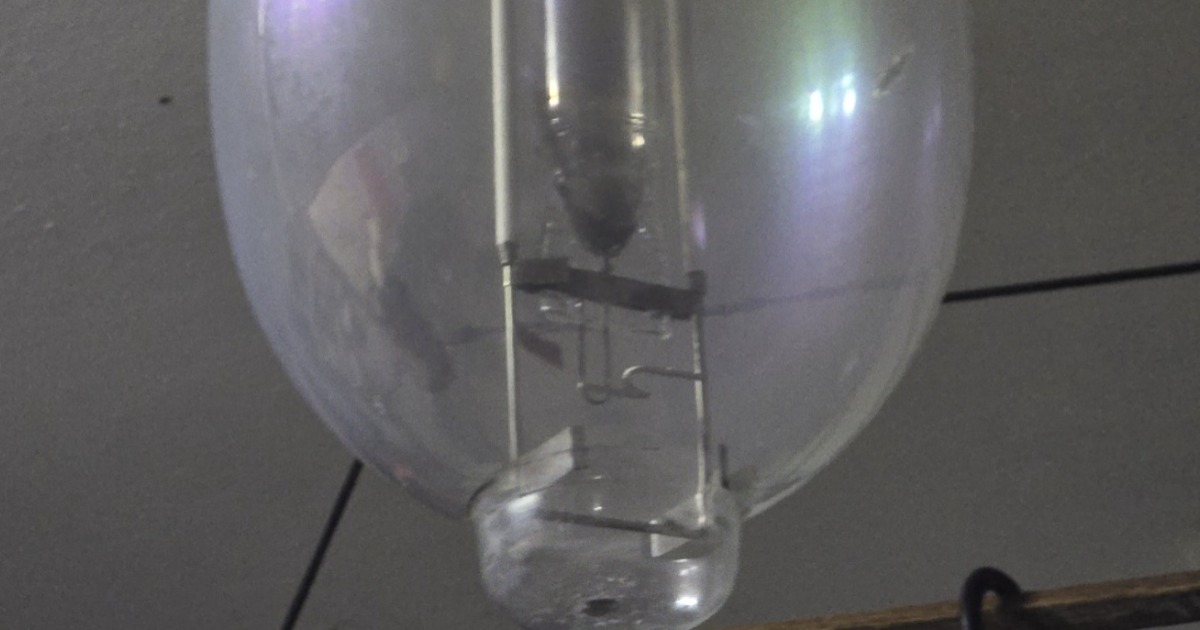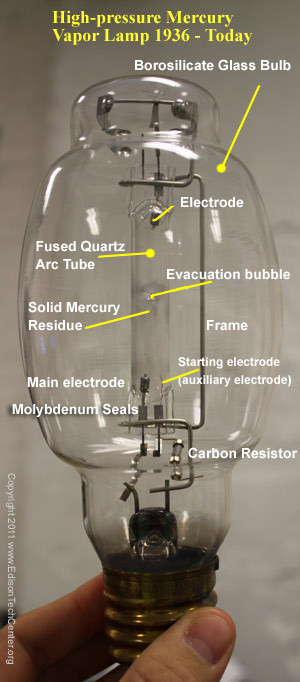Giants of the Industrial Age

Source: Reddit
As we consider lighting from the past, some symbols come to mind; incandescent light bulbs with warm filament lighting, fluorescent tubes humming above office desks, and mercury vapor lamps; the larger than life giants with a humming headier that illuminated streets, stadiums, and factories with their ghostly blue-green light.
The Bulky Bulb That Lit the World
The cover this massive bulb holds is not exaggeration. Installers usually mount massive glass bulbs—typically mercury vapor lamps about half a meter long—on ceilings or lampposts. These bulbs were packed with a serious amount of power, often from 175W and over 1000W. They were designed to light gigantic spaces: stadiums, gymnasiums, warehouses, and city streets. In the mid-20th century, they became synonymous with nighttime life as their bluish-white glow illuminated streetscape experiences.
What Made Mercury Vapor Lighting Special?
Each lamp contains an arc tube made from quartz or ceramic, which holds a small amount of liquid mercury and an inert gas. When electricity passes through the gas, it heats up the mercury until it reaches it vaporises into light. At the beginning of the cycle, mercury vapor light has a bluish light; however, as the lamp warms and creates pressure, light turns to white (though never a full-spectrum tone).

If you look at a mercury vapor bulb when it is not illuminated, you’ll notice a bead of mercury floating inside the arc tube. In addition, these lamps start up slowly; when you flipped the switch, they hummed and gradually brightened over several minutes.
Clues From the Past
You can easily identify mercury vapor lamps from their larger outer envelope. The subsequent evolution of this lamp type into metal halide lamps makes identifying these lamps easier; compared to mercury vapor, metal halide is smaller and compact. Manufacturers usually frost mercury vapor lamps or coat them with phosphor to soften the light.
Searching the base or side of the bulb, look for part numbers etched on the glass. These codes will be similar to H38 or MV1000 confirming the lamp type and wattage.
Fading Into History
Mercury vapor lamps ultimately fell to metal halide, sodium vapor, and LED. LED lighting made a big entrance into type-efficient and flexible lighting. It gained ground because the lower energy use leads to longer life and, improved color rendering. Meanwhile, the efficiency of LED lights was the part of environmental regulations by organizations such as EPA towards phasing out mercury lamp ballasts. Some cities opted for renovations and replaced mercury street lights with other light sources.
Still Glowing in Memory
We still hold a place in our shared memories for mercury vapor lamps. This unique lighting has illuminated countless school games, parking lots, and downtown evening walks. The low hum and slow warm-up joined with the shimmering bead in the arc tube to create a distinct visual memorial and audible record.
Even today, on occasion. Encountering one of these lamps in an older warehouse or workshop recalls a past era of lighting characterized by size, efficiency for its time, and uniquely atmospheric light.